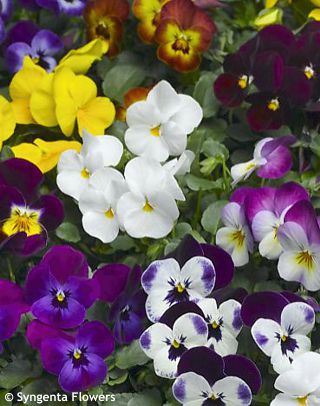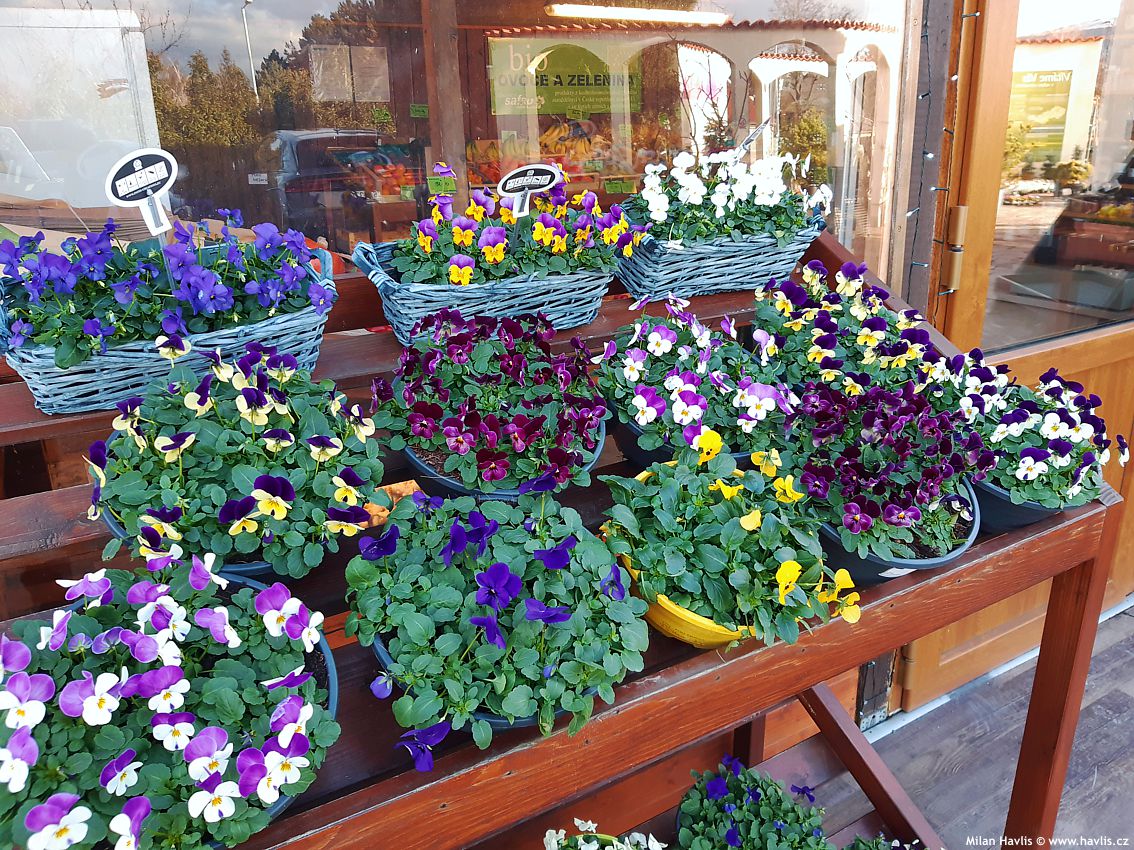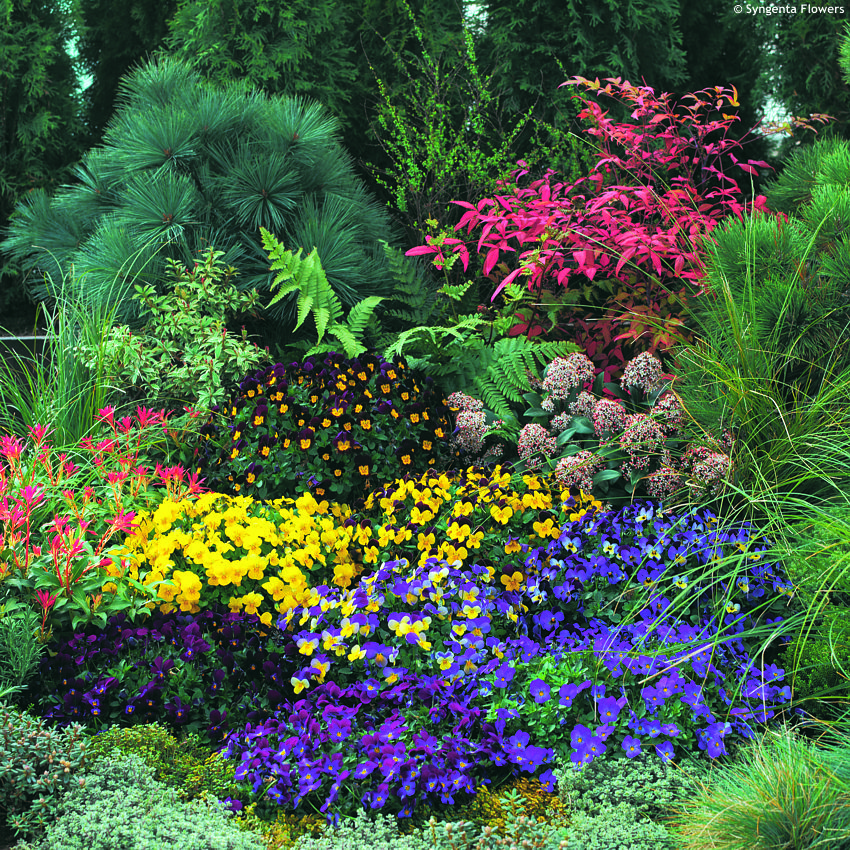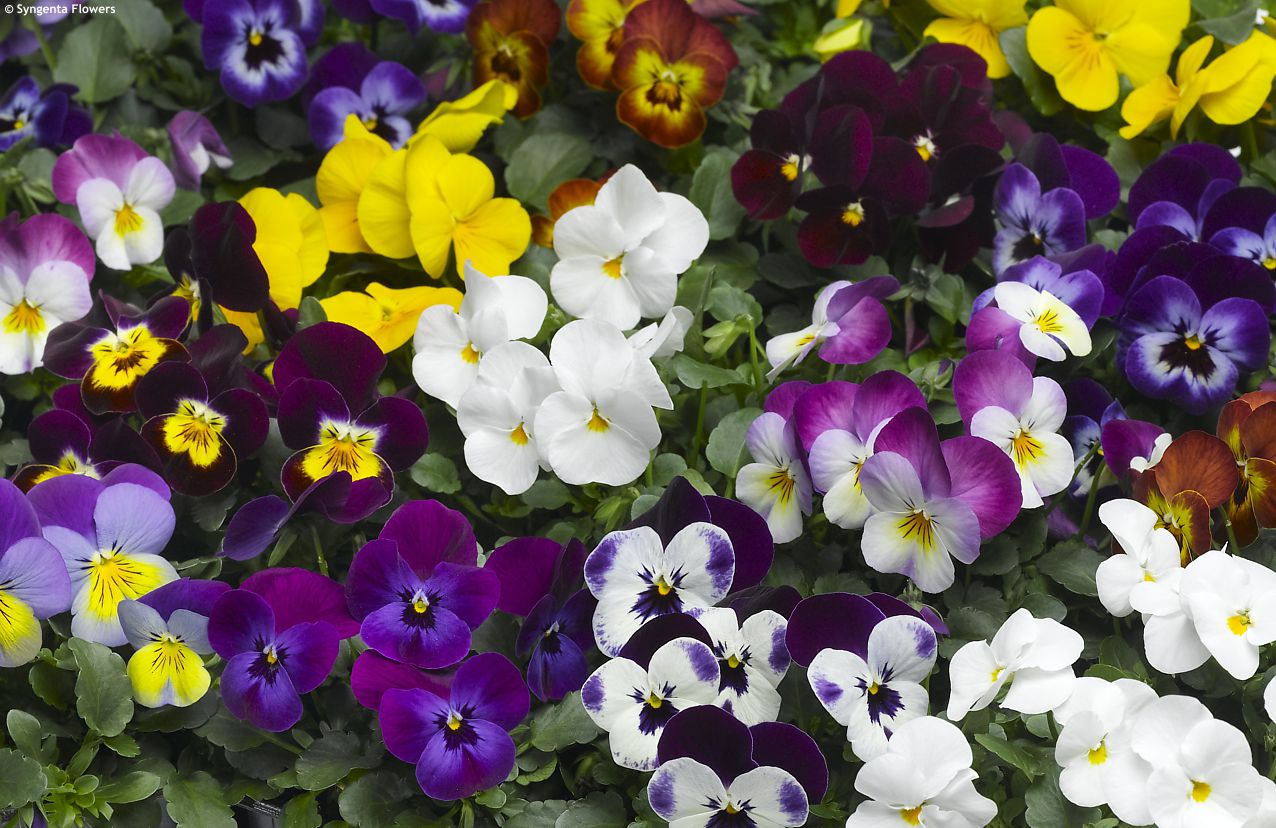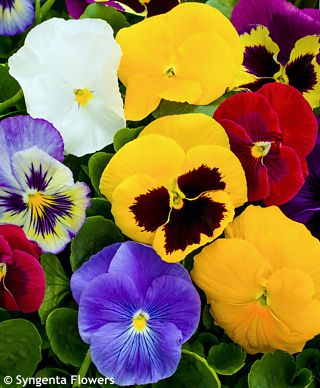Viola cornuta horned violet
Those of you who remember Keeping Up Appearances must know that there were four sisters, all of them had flower names: Hyacinth (the bossy one), Daisy (the warm-hearted romantic), Rose (the bimbo past her prime), and Violet. Violet is very important because even though you don’t see much of her she is mentioned in every episode because Hyacinth never misses an opportunity to boast with her richer sister – you know – Violet has a Mercedes, swimming pool, sauna, and a room for a pony … This BBC TV series from 1990’s is a must for those who love subtle sense of English humour and excellent acting. And based on that we know that violet is important and can be a pretty rich item!
Horned violet is a Spanish species of viola. It is an evergreen perennial for sunny or half-shaded locations with ample moisture – violet is NOT a rocky plant. It produces masses of 5-petalled, small, slightly fragrant flowers which usually come out from May until July. But if sown in a controlled environment in early summer, they are ready for autumn transplants, and already bear flowers which will last until the first truly cold days of winter as they can take down to -5°C. Then the plant goes dormant and re-emerges in spring. Flowers are edible and make a stunning display in a fruit salat or as a soup decoration.
Violets are easy to grow. If you grow them in a pot treat them almost like annuals – feed them regularly every two weeks, water them every week or so but make sure the pots are free draining. In a bed they will be happy with moderately fertile, loose soil of any pH, and will be grateful for some watering during dry spells and on the hottest days of summer. Plants may be attacked by slugs and snails. Fully hardy to about -25°C (USDA zone 6) but often self-seed.
Last update 17-01-2020

24,65 Kè

24,65 Kè

24,65 Kè

24,65 Kè

24,65 Kè

24,65 Kè

24,65 Kè

24,65 Kè
Goods are shipped all over Europe. For Russia and U.K. and for further details please read about SHIPPING OPTIONS HERE.
Are you interested in a serious discount for orders NOV-FEB? Check your options here.
THE PRICES INCLUDE VAT of 15%. For quick conversion you can use 1 CZK = approx. 0.04 EUR
- STANDARD QUALITY - Plants of this group are 1st class quality with number of branches and overall density adequate to their size and age, considering they were container grown.
- DE LUXE QUALITY - This label guarantees a luxurious quality of manually selected plants that, compared to their height and age, are exceptionally dense and beautiful.
- EXTRA - These plants are usually mature and bigger specimens with exceptional overall appearance.
- STANDARD (as described in the plant form) means a tree with a trunk of 190-210 cm and a crown at the top, unless specified differently. The commercial size for trees is their girth measured in the height of 1m from ground.
- HOBBY - These plants are of the same quality as our standard-quality plants but younger and therefore cheaper.
- SHRUB - a woody plant with branches growing bushy from the ground level.
- HALF-STANDARD or MINI-STANDARD - a small tree with shorter trunk, its size is usually specified.
- FEATHERED - These are trees with branches growing already from the base of the trunk and up along the stem.
- GRASSES and PERENNIALS - Sizes given usually read the diameter of the pot or the clump, as specified.

































